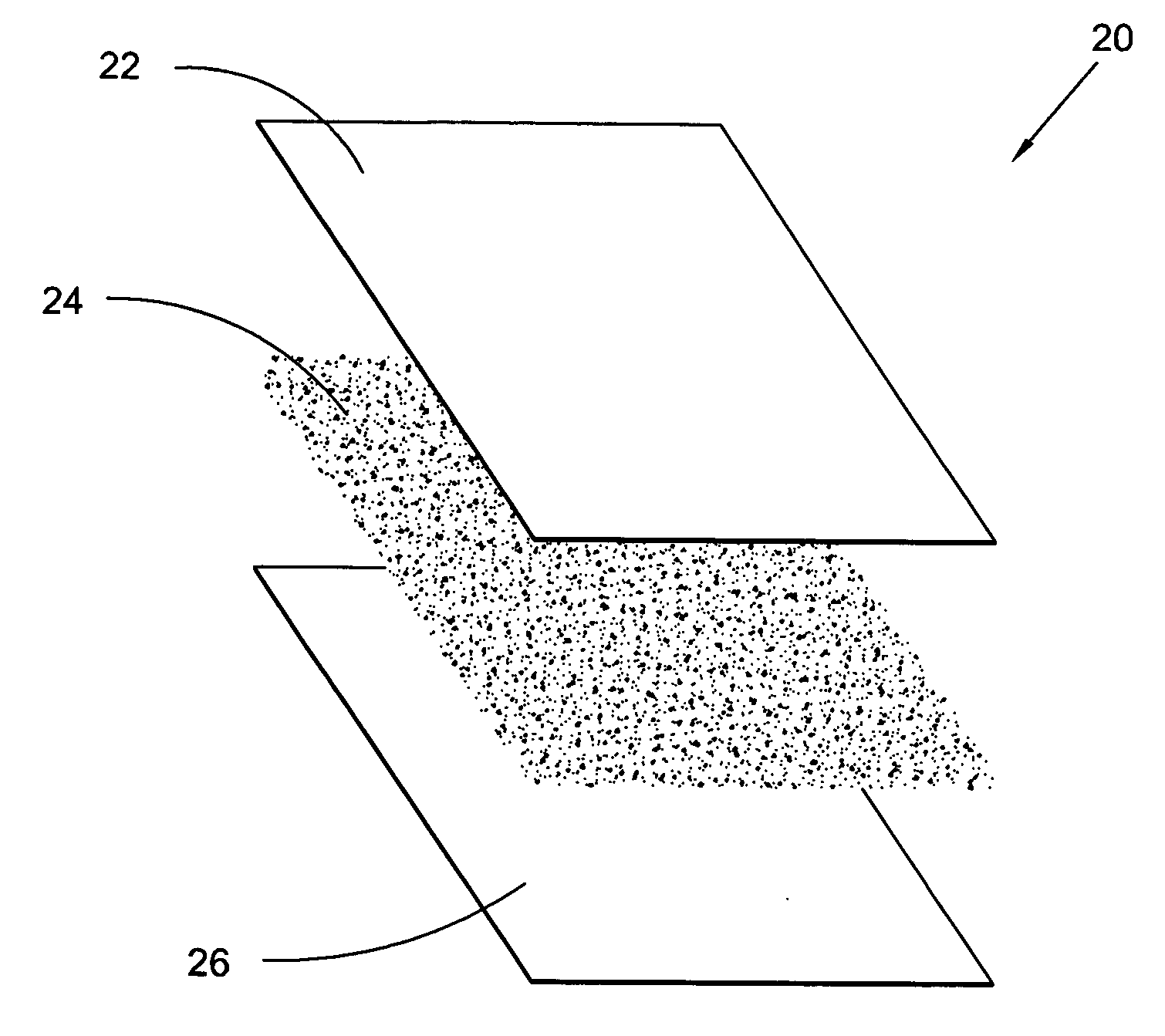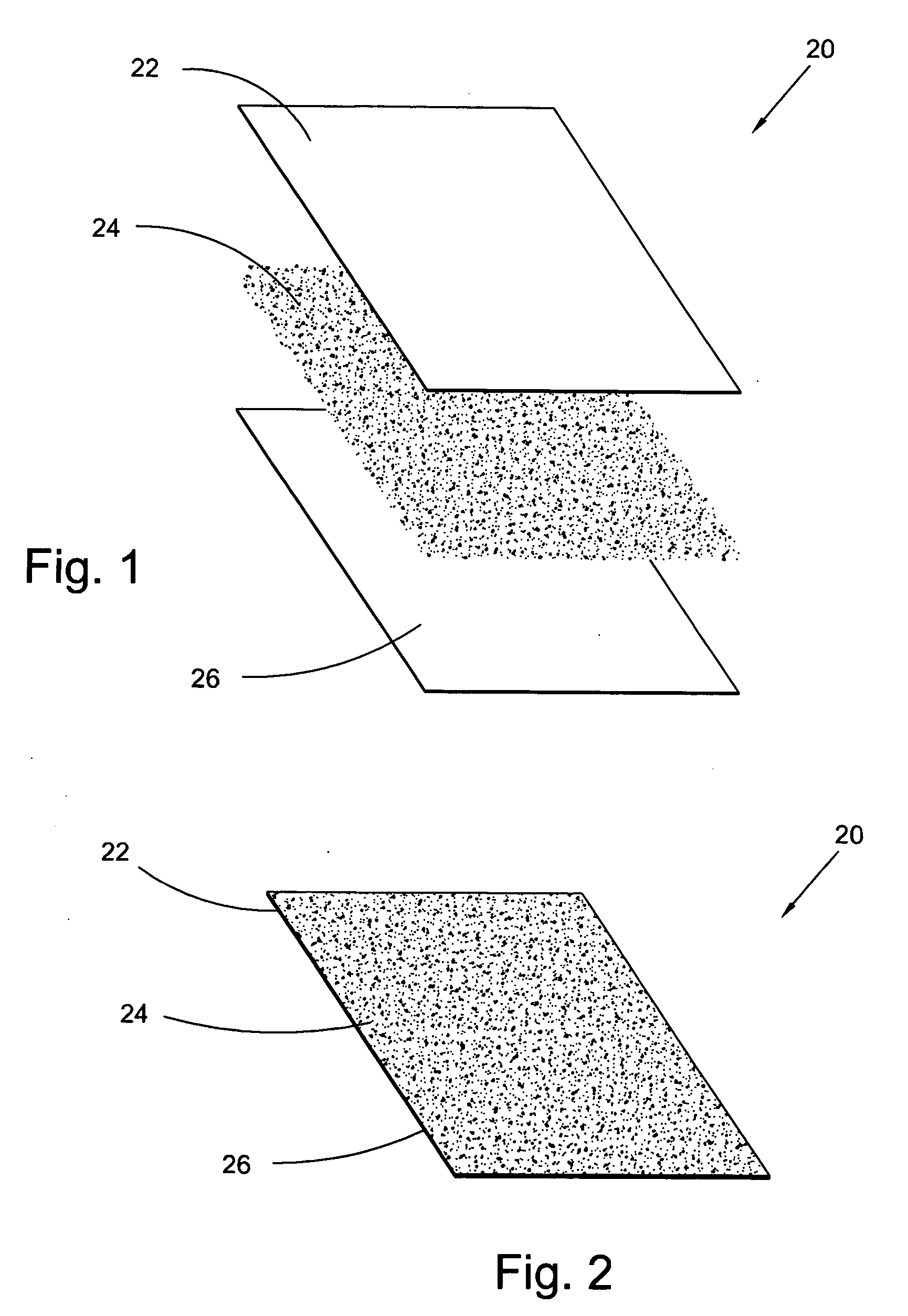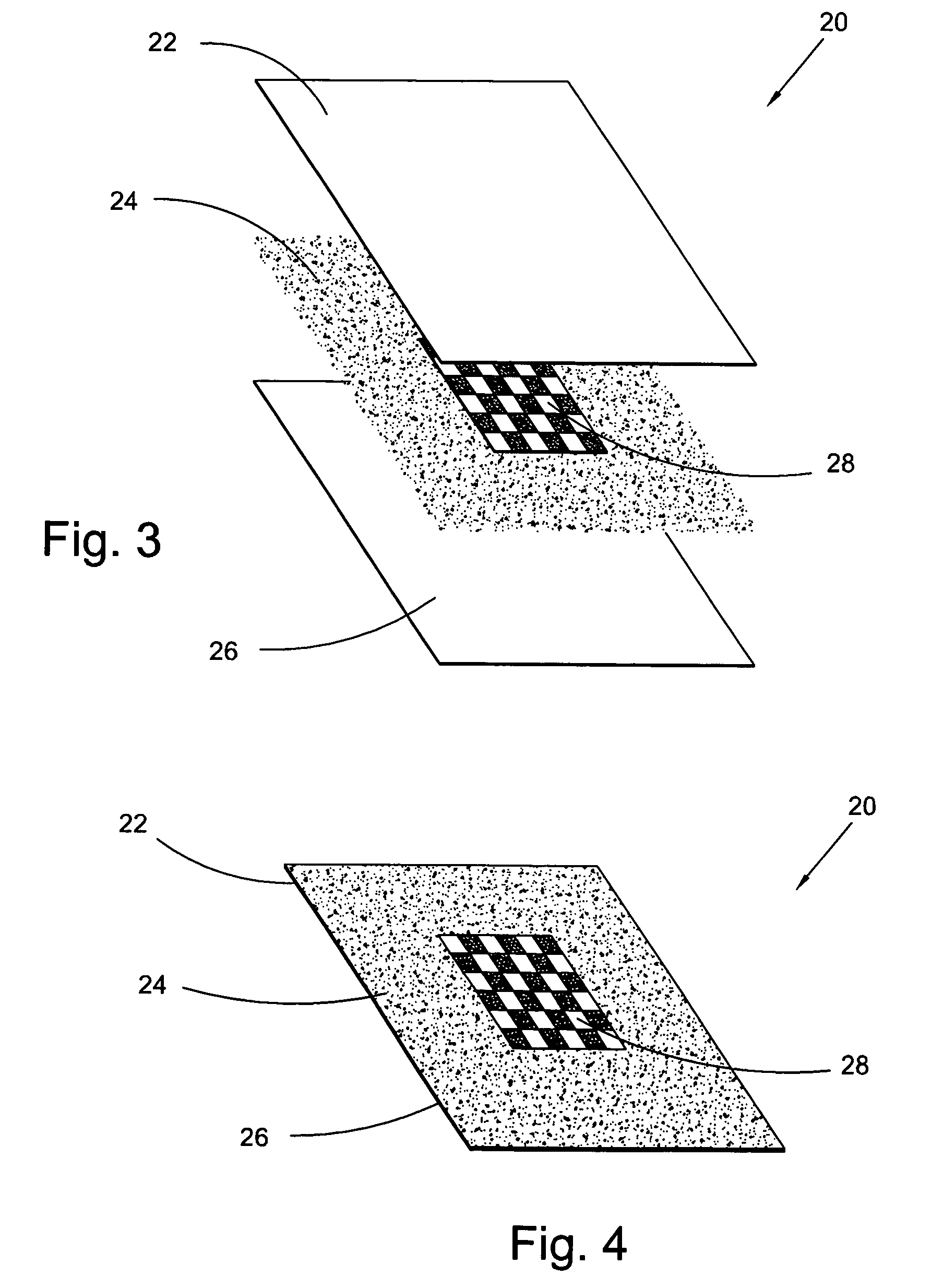Quartz/solid surface laminate
a laminate and solid surface technology, applied in the field of laminated surface coverings, can solve the problems of high labor cost, high labor cost, and high labor cost of spraying and finishing operations, and achieve the effect of less time, faster laminating time and cost-effectiveness
- Summary
- Abstract
- Description
- Claims
- Application Information
AI Technical Summary
Benefits of technology
Problems solved by technology
Method used
Image
Examples
example i
[0056] Large acrylic solid surface granules were soaked in methylmethacrylate monomer with an initiator Akzo Nobel Trigonox®, BPIC (Akzo Nobel Polymer Chemicals, Chicago, Ill.) which is activated at the same temperature range as the melamine impregnated paper liquefies and cures. Starting with particles ⅛″ in diameter, a piece of laminate sheet is made by uniformly laying down 30 grams of less than 50-mesh and greater than 100-mesh acrylic solid surface granules and then placing the large granules soaked in acrylic monomer in a pattern on the melamine impregnated 12″×12″ sheet. An overlay sheet is placed over the top of the granules and the part pressed with laminating plates under heat and pressure, approximately 305° F. and 550 psi (40 tons / ft2) pressure, causing the soaked granules to increase in area, up to 3 / 16″ in diameter on the surface. The laminate thickness was 0.065 inch. If hard materials, including but not limited to silica, quartz, and granite, are used to achieve a la...
example ii
[0057] To determine some of the possible variations of the invention, other nonthermoformable materials were used such as polyester solid surface granules, feldspar, silica, quartz, glass fines, fired clays and metallic pigments. A laminate sheet was made with heat and pressure similar to Example I above using alumina trihydrate (ATH), as this would yield a basic melamine solid surface material using the method described above. As with other mineral fillers, the combined surface area of the granules determines the amount of melamine resin required to wet out the particle surfaces to obtain an attractive part.
example iii
[0058] A laminate sheet was fabricated without melamine or phenolic backer sheets from solid surface granules sandwiched between melamine impregnated face sheets. Using the method described above, the laminate sheet had the same color on both sides and was approximately 0.05 inches thick.
PUM
| Property | Measurement | Unit |
|---|---|---|
| pressure | aaaaa | aaaaa |
| temperature | aaaaa | aaaaa |
| pressure | aaaaa | aaaaa |
Abstract
Description
Claims
Application Information
 Login to View More
Login to View More - R&D
- Intellectual Property
- Life Sciences
- Materials
- Tech Scout
- Unparalleled Data Quality
- Higher Quality Content
- 60% Fewer Hallucinations
Browse by: Latest US Patents, China's latest patents, Technical Efficacy Thesaurus, Application Domain, Technology Topic, Popular Technical Reports.
© 2025 PatSnap. All rights reserved.Legal|Privacy policy|Modern Slavery Act Transparency Statement|Sitemap|About US| Contact US: help@patsnap.com



